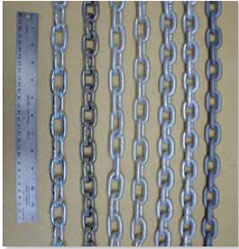
Photos by David Liscio and Doug Logan
239
I sail an Areodyne 38 in New England, primarily on weekends and a two-week annual cruise. I use 25 feet of 5/8-inch chain with 200 feet of oversized braided rode and a 35-pound Bruce anchor. In 12 years of cruising this boat, the setup has dragged only once, yet I’m still unable to relax at anchor. I’m considering going to all-chain. Also, because my boat is pretty light with a fin keel and bulb, the rode wraps around the bulb when the current is stronger than the wind, requiring diving to free the mess. This is manageable in July, not so fun in October. Can you recommend a type, size, and length of chain given my criteria? My boat weighs in at 10,000 pounds, and I am the windlass.
Larry Pierce
Areodyne 38
East Greenwich, R.I.
It is a real pain to pull up an all-chain rode without a windlass—and it can be almost impossible in an emergency. For your purposes, we definitely would not go with anything larger than 3/8-inch chain; even that’s a lot of work.
We would suggest going with 100 feet of 5/16-inch chain. That would be light enough not to hamper sailing performance but long enough to meet anchoring needs in the Northeast. In stormy weather, just add a little more scope with the braided nylon. When the breeze is up, there’s no issue with a current-bound loop finding its way around the bulbed keel. (Using a sentinel or kellet would also help ease your bulb-wrap woes.)
We’d also recommend going with high-test chain, which will deliver the most strength for your money. Acco Marine’s Grade 40 high test chain has performed well in PS tests, and it’s rated for more than twice the safe working load of Grade-30 proof coil.
While proof-coil’s corrosion resistance properties make it a great option for mooring chain, its pattern affords the least strength of any chain pattern. That’s not an issue when you’re talking heavy mooring chain, but it’s not the best idea when you’re using a small-diameter anchor chain.
Since you are the windlass, a chain stopper or similar device is essential. A hefty Samson post can also be useful to belay the rode when weighing anchor. We also recommend having another anchor in your arsenal. A combo that has worked well for us is using Bruce and plow-style anchors, and having a Danforth on hand to use as a kedge.
For more on anchor chains and other ground tackle, check out the Practical Sailor online archives, including our numerous anchor tests (December 2008, November 2008, January 2008, January 2007, October 2006, April 2006); the Dec. 1, 1999 special anchoring report; and an article on choosing ground tackle for cruising.
Some other resources that are worth exploring: Acco Marine Chain (800/533-8056, www.peerlesschain.com), the company offers good guidance on chain sizing and selection; PS contributor and bluewater cruiser Beth Leonard’s book, “A Voyager’s Handbook,” (www.bethandevans.com); and Earl Hinz’s book, “Complete Book of Anchoring and Mooring.”
































